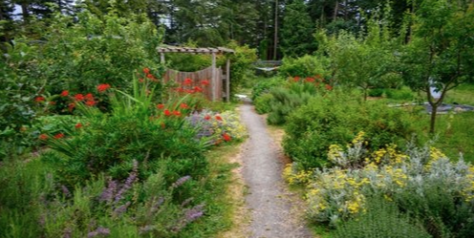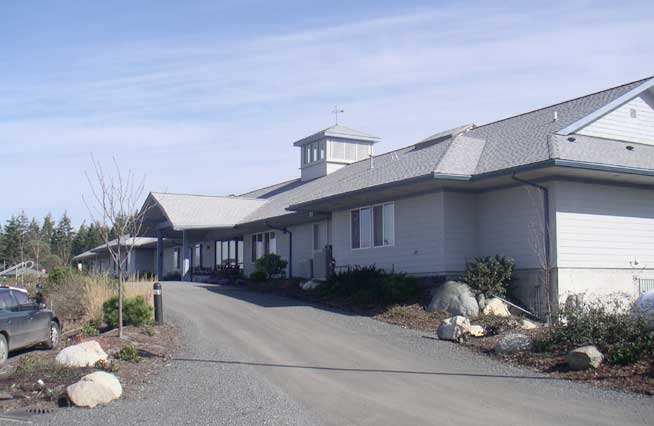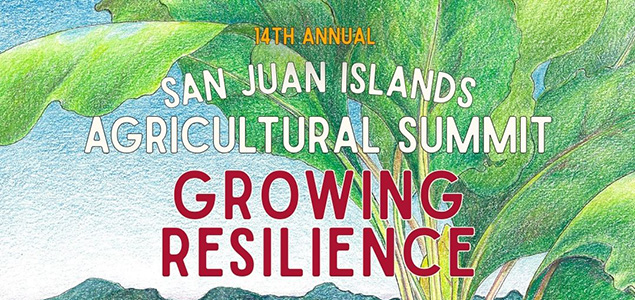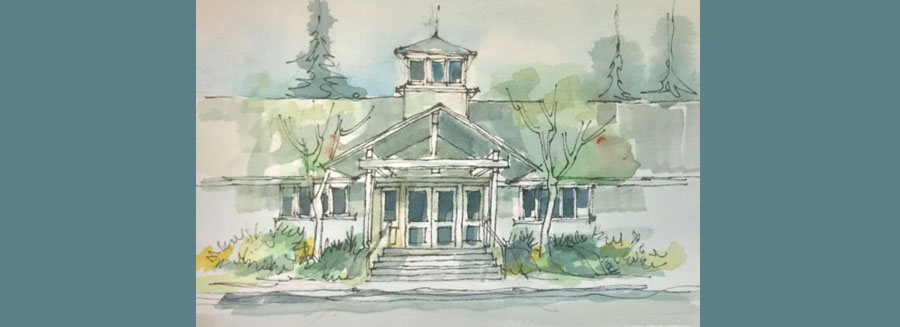||| FROM JAMES MOST for ORCHARDS, GARDENS & IRRIGATION |||
With the dry season in the PNW seeming to get longer and hotter, maintaining the efficiency of irrigation systems is becoming more and more important in the San Juans. Luckily this year we have received some substantial spring rains, but after a relatively dry winter of lower aquifer recharge, we need to be strategic to protect our island water sources.
First and foremost, the best way to make irrigation efficient is to understand how much a system uses when it is in operation. Different zones in an irrigation system can use vastly different amounts of water per hour, and efficient programming should reflect this. For example, a raised bed vegetable garden with drip irrigation might only use 50 gallons per hour, while an older landscape system with pop up sprinklers and micro sprayers could use many hundreds of gallons per hour (some zones on older sprinkler systems use upwards of 700-1000 gallons per hour!).
To identify how much each zone in your system uses, you will need to work with a stopwatch and your water meter. Ideally your irrigation system has its own dedicated water meter, but if it doesn’t, you can work with your property water meter just as long as you ensure no one else is using water in the house while you are doing your testing. By running each zone individually and timing how long it takes to use a gallon of water, you can do some simple math and determine a gallons-per-hour use rate for each zone (GPH).
Once you have a grasp of how much water your irrigation system uses during its operation, it is time to determine the appropriate run time for each zone. The most important thing to remember here is not to “set it and forget it.” Landscape water needs vary dramatically throughout the season, and if you or your landscaper is in the habit of turning it on full blast in the spring and making no adjustments during the dry season, you potentially are using way more water than necessary. Starting a system up conservatively, and ratcheting up as we reach the hot and dry season is the ideal. This leads to the most important tool you have to determine if your landscape is receiving the needed amount of water- your finger!
Ideally we are keeping our gardens and landscapes moist through the dry season for optimal plant growth- not going bone dry or staying overly saturated. By sticking your finger several inches into the soil as a moisture sensor, you can feel if the soil is adequately moist (I like to aim for moist sponge feeling- not too wet, not too dry). The time to do this moisture testing is just before your irrigation system runs its cycle- so if it runs once a week, check it just before it is scheduled to run again. If it still feels wet between cycles, you can turn it down. If it is bone dry, turn it up. Of course there are many other factors to consider including soil type and plant type, but generally more established landscapes need far less moisture than newly planted landscapes.
Aside from proper programming and adjustment, the best way to make your irrigation system more efficient is with simple upgrades. If your system uses sprinklers or micro sprayers to water landscaping, switching to drip irrigation can save a huge amount of water while cutting down on weed growth. By delivering water directly to the root zone, landscape plants thrive while bypassing watering all the surface weeds. Often, upgrading to drip irrigation can be done quickly and cheaply without needing to change the “bones” of the irrigation system (buried mainlines, valves, etc).
Another simple upgrade is to switch to a modern Wifi connected controller. This way, you can easily adjust the programming from your smartphone, set rain delays, and even turn on automatic seasonal adjustment that helps adjust your programming based on the weather report.
Finally, an excellent upgrade is to attach a “Flume” device to your water meter to get real time water use information and leak alerts sent directly to your phone. This can both protect your home from leaks and water damage, and alert you to an irrigation system that is leaking or stuck on. For members of Eastsound Water, you already have transmitting meters installed at your home, so be sure to sign up for leak alerts if you haven’t already done so.
At Orchards, Gardens, & Irrigation, we specialize in water efficient irrigation systems, and are passionate about helping people achieve a verdant landscape while conserving our limited island resources. We provide free irrigation systems audits to help people get the most out of their irrigation water use. Call (360) 726-2919 or visit www.orcasirrigationlandscape.com for more information.
**If you are reading theOrcasonian for free, thank your fellow islanders. If you would like to support theOrcasonian CLICK HERE to set your modestly-priced, voluntary subscription. Otherwise, no worries; we’re happy to share with you.**








